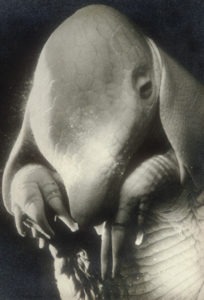
He’s Laughing

This post was actually written quite some time ago and held in reserve with about 50 other little stories under the title “Grendel’s Mother Doesn’t Have a Name!” which is now the title of a book chapter. It is actually only a little confusing, and also my devotion to pinnipeds remains unswerving.
I was inspired to revisit by sequential experiences, the first running across an adorable video of a sea otter playing a sort of tag with an Australian cattle dog. The sea otter is clearly enjoying himself, and as I watched him woof softly as he partially clambered up onto a dock, I heard myself think “…er lacht…” followed by a moment of confusion and then thinking… “… was ist das auf Englisch?” For a second I couldn’t think of the words. I have had a few fragmentary dreams in German, but this is the first time anything like this has ever happened in regular life. It was actually very pleasant and I hope it will begin to happen more often.
The other addition to this post is this image of this astounding statue watching over Hohenzollernplatz. It was made by Ferdinand Liebermann in 1930 and has withstood a lot. This is a very evocative image naturally and also reminds me of the moschophoros, which in turn puts me in mind of Knabe Mit Lamm and the poor unfortunate kids…(just a tiny image here because a whole story is coming along about this painting).

